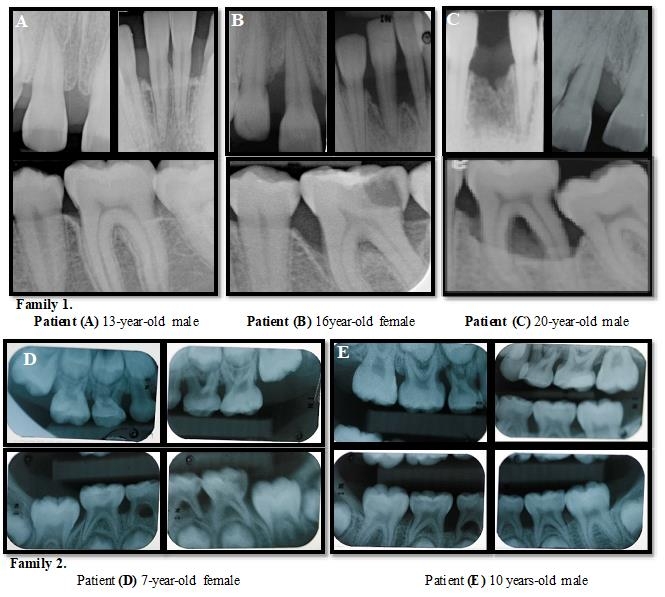IADR Abstract Archives
Pattern of Grade C Molars and Incisors Periodontitis (C-MIP) in Families
Objectives: The aims of this study were to determine clinical patterns of Grade-C Molar-Incisor-pattern Periodontitis (C-MIP) and inflammatory response in affected families.
Methods: Sixty-nine siblings within 28 families affected by moderate to severe C-MIP were included. Clinical parameters included: sites of disease presentation (side and jaw), type of teeth affected, bone loss pattern, pocket depth, clinical attachment levels. Symmetry patterns within siblings and families were evaluated. LPS stimulated levels of 14 inflammatory markers in whole blood were correlated with extent and severity of C-MIP, as well as within families.
Results: A similar disease pattern within siblings and families was found related to side and arch affected with disease but no difference found in symmetry between jaws or sides. Most common teeth affected were both first molars and incisors or first molars only for permanent dentition but molars only for primary dentition (p<0.001), and symmetry was also higher in molars than incisors within siblings (P=0.02). Arc-shape/vertical bone defects were the most commonly found (p=0.006) and higher symmetry was found for these defects within permanent dentition (p=0.005). Positive correlations were found between number of teeth affected and age and percent affected sites/CAL with several inflammatory markers (p<0.05). Inflammatory response for all inflammatory markers were also found to be significantly correlated within families (p<0.05) and intraclass correlation coefficient was highest (>0.5) for IL12p40, GMCSF, IL8, IL6 and IL10.
Conclusions: C-MIP families seem to present similar patterns of disease with high degree of symmetry in type of affected teeth, and bone defect. The level of inflammatory response to bacteria seem to also play a role in the extent and severity of this disease and presents high degree of correlation within families.
Methods: Sixty-nine siblings within 28 families affected by moderate to severe C-MIP were included. Clinical parameters included: sites of disease presentation (side and jaw), type of teeth affected, bone loss pattern, pocket depth, clinical attachment levels. Symmetry patterns within siblings and families were evaluated. LPS stimulated levels of 14 inflammatory markers in whole blood were correlated with extent and severity of C-MIP, as well as within families.
Results: A similar disease pattern within siblings and families was found related to side and arch affected with disease but no difference found in symmetry between jaws or sides. Most common teeth affected were both first molars and incisors or first molars only for permanent dentition but molars only for primary dentition (p<0.001), and symmetry was also higher in molars than incisors within siblings (P=0.02). Arc-shape/vertical bone defects were the most commonly found (p=0.006) and higher symmetry was found for these defects within permanent dentition (p=0.005). Positive correlations were found between number of teeth affected and age and percent affected sites/CAL with several inflammatory markers (p<0.05). Inflammatory response for all inflammatory markers were also found to be significantly correlated within families (p<0.05) and intraclass correlation coefficient was highest (>0.5) for IL12p40, GMCSF, IL8, IL6 and IL10.
Conclusions: C-MIP families seem to present similar patterns of disease with high degree of symmetry in type of affected teeth, and bone defect. The level of inflammatory response to bacteria seem to also play a role in the extent and severity of this disease and presents high degree of correlation within families.

